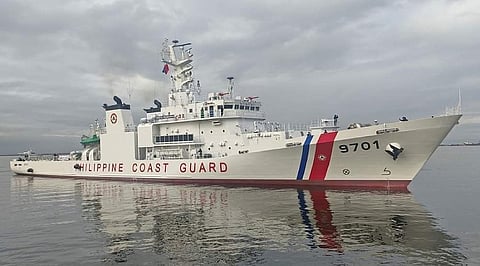

The Philippine Coast Guard recently acquired two new patrol vessels in a series built by Mitsubishi Shipbuilding. Named after two famed figures of the Philippine revolution against Spain in the late 1890s, sister vessels BRP Teresa Magbanua and BRP Melchora Aquino are perhaps most notable for being the largest vessels yet acquired by the Philippine Coast Guard, with each vessel having a length of 96.6 metres, a moulded beam of 11.5 metres, and a gross tonnage of 2,260.
Officially designated as multi-role response vessels (MRRVs), these will be operated on a variety of missions including maritime security patrols, search and rescue (SAR), counter-narcotics operations, logistical transport, oil spill response, and environmental protection.
The Teresa Magbanua-class vessels are variants of the Kunigami-class patrol vessels that were originally designed and built by Mitsubishi for the Japan Coast Guard. Like the Kunigami-class, the Philippine MRRVs have steel hulls and aluminium superstructures with additional ballistic protection for the bridge. However, one noticeable difference found on each MRRV is the incorporation of a flight deck with hangar for use by an H145 utility and SAR helicopter.
The helicopter hangar replaces storage space that would otherwise be occupied by a small tender with its own launch and recovery crane, as was the case on the Kunigami-class vessels. The MRRVs still have deck space for two rigid inflatable boats (RIBs) for use in at-sea interceptions and boardings as well as remotely operated vehicles (ROVs) for conducting underwater surveillance and SAR missions.
The other key difference from the Kunigami-class is the removal of the autocannon armament, as Japanese law prohibits these from being exported. The Philippine MRRVs nonetheless retain their forward weapons mounts should the coast guard decide to install appropriate armament at a later time.
The propulsion system on each MRRV currently consists of two diesel engines with a total rated output of 13,200 kW, though the vessels will also be fitted with electric propulsion in the future to further reduce emissions. The diesel engines can deliver a maximum speed of 24 knots, while a more economical cruising speed of 12 knots will enable sailings of up to 4,000 nautical miles in between refuelings.
The vessels are each crewed by 67 personnel. The onboard spaces include an accommodation area for housing additional personnel such as rescued accident survivors. Also onboard each MRRV is a hyperbaric chamber for use by divers.
The electronics suite includes Furuno X- and S-band radars, Teledyne FLIR electro-optical/infrared sensors, and an integrated communications system from Rohde and Schwarz.
Teresa Magbanua was delivered to the Philippines in February 2022 and commissioned into service on May 6, while Melchora Aquino departed Mitsubishi's Shimonoseki Shipyard on its delivery voyage on May 27 with its arrival in Manila set for this Wednesday, June 1. The second MRRV is scheduled for commissioning no later than the third quarter of this year.
| Teresa Magbanua & Melchora Aquino | |
| SPECIFICATIONS | |
| Type of vessel: | Multi-role response vessels |
| Flag: | Philippines |
| Owner: | Philippine Coast Guard |
| Builder: | Mitsubishi Shipbuilding, Japan |
| Hull construction material: | Steel |
| Superstructure construction material: | Aluminium; ballistic protection |
| Length overall: | 96.6 metres |
| Beam: | 11.5 metres |
| Draught: | 4.3 metres |
| Gross tonnage: | 2,260 |
| Main engines: | 2 x 6,600 kW |
| Maximum speed: | 24 knots |
| Cruising speed: | 12 knots |
| Range: | 4,000 nautical miles |
| Radars: | Furuno |
| Radios: | Rohde and Schwarz |
| Night vision: | Teledyne FLIR |
| Other equipment installed: | Helicopter deck; hyperbaric chamber |
| Tenders: | 2 x rigid inflatable boats |
| Type of fuel: | Diesel |
| Accommodation: | Survivors' area |
| Crew: | 67 |
| Operational area: | Philippines exclusive economic zone |
